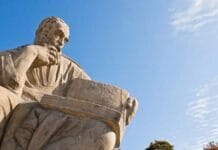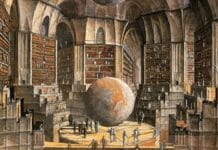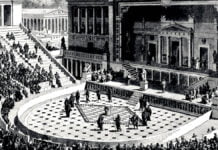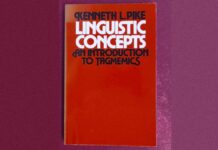The Divine Comedy by Dante Alighieri is one of the most celebrated and influential works in world literature, written between 1308 and 1321. This epic poem is a profound spiritual and allegorical journey that reflects the human soul’s search for meaning, redemption, and divine love. The Divine Comedy is divided into three parts —Inferno, Purgatorio, and Paradiso —each representing one of the realms of the afterlife according to medieval Christian theology: Hell, Purgatory, and Heaven.
The Divine Comedy is a monumental work not only for its theological themes but also for its detailed portrayal of Dante’s time. Many of the figures Dante encounters are real people from history or Dante’s own life, including political rivals, popes, and historical figures. Through these encounters, Dante critiques his day’s political and religious corruption.
The poem also marks a significant moment in literary history, as it was written in the Tuscan dialect of Italian, rather than Latin, which was the literary language of Dante’s era. This choice helped establish Italian as a respected literary language and played a critical role in developing Italian literature.
Structure and Themes
The Divine Comedy is structured in three main sections, each containing 33 cantos (chapters), with an introductory canto in Inferno, bringing the total to 100 cantos. Each part corresponds to a stage of the soul’s journey toward God.
Inferno (Hell)
This section describes Dante’s descent into Hell, a terrifying place of suffering and punishment for sinners. Hell is depicted as nine concentric circles, each punishing different types of sin. Guided by the Roman poet Virgil, Dante encounters historical, mythical, and contemporary figures undergoing various forms of punishment that reflect their sins. Themes of justice, moral corruption, and the consequences of sin are prevalent in Inferno.
Purgatorio (Purgatory)
In Purgatory, Dante witnesses the souls of those in the process of purification. Purgatory is depicted as a mountain with seven terraces, each representing one of the seven deadly sins: pride, envy, wrath, sloth, avarice, gluttony, and lust. Here, souls undergo penance to prepare themselves for eventual entrance into Heaven. Themes of hope, repentance, and the transformative power of suffering are emphasised in Purgatorio.
Paradiso (Heaven)
The final part of the Divine Comedy describes Dante’s ascent through the heavenly spheres, where souls are united with God. Guided by his idealised love, Beatrice, Dante moves through the spheres, each representing different virtues and levels of closeness to God. He encounters saints, theologians, and angels, finally culminating in a mystical vision of God. In Paradiso, Dante explores themes of divine grace, eternal bliss, and the nature of God’s love.
Allegorical and Spiritual Journey
The Divine Comedy is both a literal and an allegorical journey. As the protagonist, Dante represents every human soul striving to overcome sin and reach salvation. Virgil symbolises human reason, which can guide the soul part of the way towards God, while Beatrice represents divine love and faith, essential for attaining true enlightenment.
Each part of the journey reflects Dante’s belief in the spiritual growth of the soul, as well as the values of medieval Christianity. The poem serves as a mirror of the moral and spiritual struggles faced by all humans, illustrating the consequences of sin, the path of redemption, and the ultimate bliss of union with the divine.
Literary Style
Dante’s Divine Comedy is written in terza rima, an interlocking three-line rhyme scheme (ABA, BCB, CDC) that enhances the flow and rhythm of the text. The poem is rich in metaphor, vivid imagery, and symbolic language, offering layers of meaning and inviting readers to reflect on the moral and spiritual significance of each encounter. Dante’s precise yet deeply emotional language contributes to the poem’s lasting power and beauty.
The Divine Comedy has had an immense influence on literature, art, theology, and philosophy. Writers such as T.S. Eliot, Jorge Luis Borges, and James Joyce drew inspiration from Dante’s work, and visual artists, including Botticelli and Gustave Doré, created famous illustrations. The poem continues to inspire interpretations and adaptations in modern literature, music, and visual arts, testifying to its universal themes and profound insights into the human soul.
Dante’s Divine Comedy is both a profoundly personal and universal work, addressing themes of sin, redemption, divine justice, and love. It is a masterpiece that has transcended its historical period to become a timeless exploration of human nature and the quest for salvation. Through its powerful imagery, intricate structure, and profound spiritual insights, the Divine Comedy remains one of the greatest works in world literature, inviting readers to reflect on the path of the soul and the possibility of divine grace.




























